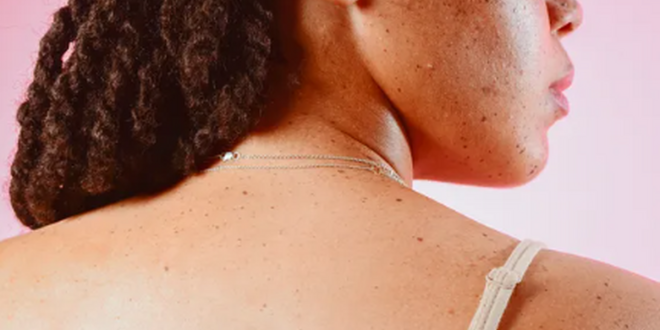Although they are not dangerous, they can be annoying, especially if they get caught on clothing or jewellery.
What to know about skin tags
Skin tags are made up of collagen fibres, blood vessels, and skin cells. They look like small, soft balloons of skin attached to a thin stalk.
They are usually about the size of a grain of rice but can be as large as a grape. Skin tags can be smooth or slightly wrinkled and may be flesh-coloured or darker.
Why do skin tags develop?
Skin tags develop for several reasons:
1. Friction: Skin tags often form in areas where skin rubs against skin, like the neck, armpits, and groin.
2. Genetics: If your parents have skin tags, you might be more likely to get them too.
3. Age: Older adults are more likely to develop skin tags.
4. Hormones: Changes in hormones, like during pregnancy, can cause skin tags to form.
5. Weight: Being overweight can cause more friction between skin folds, leading to more skin tags.
6. Diabetes: People with diabetes are more prone to developing skin tags.
Are skin tags dangerous?
Skin tags are generally harmless and not a sign of any serious medical condition. They do not turn into cancer. However, if a skin tag changes in appearance, bleeds, or causes pain, you should see a doctor to make sure it is not something more serious.
How to remove skin tags
If a skin tag bothers you, there are several ways to remove it. Here are some common methods:
1. Over-the-counter products: There are creams and solutions you can buy that freeze off the skin tag, similar to how warts are treated.
2. String method: This involves tying a piece of dental floss or thread around the base of the skin tag to cut off the blood supply, causing it to fall off after a few days.
3. Scissors or nail clippers: Some people use sterilised scissors or nail clippers to cut off skin tags. This can be painful and carries a risk of infection.
1. Cryotherapy: A doctor freezes the skin tag with liquid nitrogen, causing it to fall off after a few days.
2. Cauterisation: This method involves burning off the skin tag using electrical energy.
3. Excision: A doctor cuts off the skin tag with a scalpel or surgical scissors.
4. Ligation: A medical professional ties off the skin tag to cut off its blood supply, similar to the string method.
How to prevent skin tags
While it might not be possible to prevent all skin tags, you can take steps to reduce your chances of developing them:
1. Maintain a Healthy Weight: Reducing skin folds can help minimise friction.
2. Keep Skin Dry: Use powder to keep areas prone to friction dry.
3. Wear Loose-Fitting Clothes: This can help reduce rubbing and irritation.
When to see a doctor
1. The skin tag is in a sensitive area, like the eyelid.
2. The skin tag is large or painful.
3. You are unsure if the growth is a skin tag or something else.
4. The skin tag changes colour, bleeds or grows quickly.
This content was created with the help of an AI model and verified by the writer.
 Top Naija News – Nigeria News, Nigerian News & Top Stories Top Naija News – Nigerian Newspapers, Nigerian News. topnaijanews is a daily Nigerian newspaper covering Latest News, Breaking News, Entertainment, Sports, Lifestyle and Politics.
Top Naija News – Nigeria News, Nigerian News & Top Stories Top Naija News – Nigerian Newspapers, Nigerian News. topnaijanews is a daily Nigerian newspaper covering Latest News, Breaking News, Entertainment, Sports, Lifestyle and Politics.




